This article is part of a new beginner’s series. Click here to find more articles from this series.
No talk about your budget is complete without discussing technology.
The concept of technology for training has really evolved in the last decade. Way back in the day you were lucky to have a bicycle computer that you could actually read the screen on. These days we are assaulted with information and data across countless technology options.
You can have computers for your bike, for running, and for swimming. They can all be linked up to satellites. You have optional privacy settings so that people can’t find where you live. Long gone are the days when you could tell your spouse you “got lost” — now anyone can follow your breadcrumb trail and see that you actually went to the local bakery for an extra pitstop on your way home!
There are both pros and cons of technology; it’s not just what you have, it’s how you use it. Our goal in this section is to help you make the best possible decisions as a beginner to set you up not only for this year but also looking forward to the future.
Baseline Technology
The baseline technology that you need has nothing to do with training. Can you believe it? What is this incredible piece of technology you ask? It’s simple…
You need a calendar.
Without a doubt, the most challenging part of your training is going to be making it fit into your life. Whether you are a busy professional or someone who stays at home and juggles all of the kids’ schedules — or someone who’s in between — we’re all busy.
The trick to being successful as a beginner triathlete is to make sure that you have enough time in your schedule to get the critical work done.
Some people prefer the bombastic in-your-face approach of just telling everyone what they’re doing for training and everyone else can just go to hell. That works for a short while — maybe once or twice — but it’s not going to be sustainable.
So we use a calendar in two specific ways. First, to find places where you have opportunities for training. Second, to block out set periods of time for your training to happen. Thanks to your calendar, you won’t plan your next long ride on the same weekend as your child’s a dance rehearsal or karate tournament. Thanks to your calendar, you won’t double book an important call with your next track session.
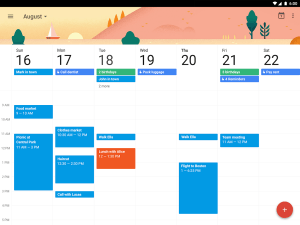 Digital Calendar vs Digital Training Plan
Digital Calendar vs Digital Training Plan
Calendars are free. Digital calendars are free. Most training plans, however, are not free.
A digital calendar will allow you use it on the go and also use it to connect with other people. It’s easy to divide your calendar into smaller micro-calendars for each facet of your life — work, kids, home, etc.
Done properly, you can organize your entire training week into your existing week in a few simple clicks. You really don’t need to pay for a training plan that talks your calendar, or for one that operates as a calendar.
Your Weekly Scheduling Routine
All you need is a training plan and twenty minutes every Sunday night. In that short window you can:
- Look at your week as scheduled for life (work, home, etc.) and compare that to your training plan.
- Putting your thinking cap on.
- Merge your training and life schedules by creating events that will block off time to ensure that you have availability to train.
- Move workouts and events as required to make ^that^ happen.
- Bonus Tip: Publish / Share this calendar with other people so they can also see your schedule and prepare / adjust accordingly.
Training Technology
Now it’s time for the sexy stuff: your training technology. From chargers to widgets to magnets and sensors, there’s something for everyone.
Bonus here is that a lot of the items we’ll cover in this section are also related to your racing as well. This is one of the few places where you get both training and racing benefits for a single purchase.
A Heart Rate Monitor
The number one piece of equipment we recommend you have is a heart rate monitor. These typically come with a watch. As a baseline, you’ll want to pick a heart monitor with a watch that will also show you time (elapsed, time of day, etc.) and do splits (with a lap button).
You want a Heart Rate Monitor because you can use that to not only gauge your effort in training but also to pace yourself on race day. The biggest challenge that most beginner athletes face is simply not knowing how hard they should be going.
Sometimes athletes are pushing too hard, which will undermine the overall work / recovery cycle of their plan.
Other times athletes are so tired they can’t work hard enough to make the session worth it.
And the transition to racing makes heart rate data even more important. You have a level of effort used to in training — but on race day the different stimuli and adrenaline of the race experience often short-circuit the understanding you have between your brain and your body. Heart Rate Monitors bridge that gap and make sure that you’re doing exactly what you need to do to have a successful race.
A Garmin Cycling Computer
The second piece of technology we recommend that you get, this one is a bit expensive, is a Garmin cycling computer. I personally use the Garmin 810 but any larger screen model will do.
What you looking for here is a device that not only ANT+ compatible (which is an open-source language that allows multiple devices to communicate) but also uses GPS to track your speed and distance traveled.
I recommend a GPS/map enabled device because you can load courses into the device and it will give you turn by turn directions. As a Beginner, one of the biggest challenges is finding places to ride and not getting lost. A GPS-enabled bicycle computer will solve this for you instantly by telling you when you should turn, and which way (left turn, right turn) for the entire ride.
You could take your bike right now to Manitoba and you could ride a course and not get lost because you have a GPS cycling computer. Of course I can’t say that you won’t be mauled by a grizzly bear but that’s something else.

A GPS Running Watch
The third item we recommend — and this is optional — is a GPS running watch. Going back to the Heart Rate Monitor section above, many GPS watches will also have heart rate monitor capability built-in.
The GPS watch falls into the optional category because it’s nice to know how fast running and how far you run but it’s certainly not required. You can always go back and either following a route with an online tool to find a distance. At the end of the day as your coach I’m only interested in you spending time at the right level zone and I’m not really concerned with how far you went.
Internet-Enabled Bicycle Trainer
The fourth and final element that I would put in the technology category is an online bicycle training tool. This is technology that will connect your bicycle when you train indoors to a computer such that you can either interact with others or watch your information on the screen life. Over the past decade this technology has seriously evolved — and we’ve seen how well athletes respond to using indoor trainers as an effective tool when they have a solid visual representation of how hard they’re working.
Riding indoors with your stereo hooked up is zero fun. You can add in a laptop computer to make it slightly more fun. But an online training connection puts you alongside virtual competitors on courses that feel real…it’s a total game changer.
As you’re thinking about your season, if a large portion of it seems to have you indoors because of where you live or because of the weather, you definitely want to look into this. Technology such as Trainer Road (www.TrainerRoad.com) or Zwift (www.zwift.com/) are both great options.
Training Data & Analysis
Disclosure — this section falls outside the purview of what we would normally recommend to a beginner. Most beginners are just happy to get the training plan and get a schedule and be able to execute it.
At the same time, however, 90% of beginners become second timers. And this is for those of you in the triathlon game for the long haul.
When an athlete comes back and says that they want to train for another race, or that they want to be better than they were last year, the first question I asked is “What did you do last year?
And honestly 90% of that 90%…they can’t tell me. They can’t tell me because they never tracked what they did. Maybe they wrote it down, or maybe they have a print out of something stuck somewhere, but they simply don’t have any consistent data collected.
Past performance is the best predictor of future performance.
Do yourself a favor by thinking about getting your hands on an online training log. It could be something online that’s free such as Garmin Connect that will come with your device (www.connect.garmin.com) or perhaps Strava (www.strava.com) which uses the data from the GPS enabled device to track your ride, give you scores, and allow you to connect socially with other athletes.
Perhaps you want to go higher dollar and invest in something like Training Peaks (www.trainingpeaks.com) which gives you a much more detailed level of analysis. Whatever you choose, understand that by putting your data online are not only creating a record — you’re also creating a backup of that information.
Without your historical training data, your odds of getting better the next time are significantly reduced…so plan accordingly!
A Nutrition Log / Planner
Another “nice to have” option is a nutritional log. This isn’t required by any means but it certainly can be a useful tool especially for those of you who are focusing on body composition as part of your season.
For athletes who are 10, 15, even 20 pounds overweight — losing that weight will be the biggest success factor for your next race.
Think about. It’s like taking a 20-pound jacket off your back and then going for that same 8 mile run. Can you imagine how much easier that would feel? How much faster you would be?
What can tell you – every pound you lose is worth approximately two seconds per mile in an Ironman marathon. So if you lose 20 pounds, that’s 40 seconds per mile. Across 26 miles that is 1040 seconds. Translation — 17 minutes and 30 seconds!!!
New, lighter you is literally two miles ahead of your former self by the finish line.
If body composition falls within the construct of what you’re focusing on the season you may want to look at is something that will help you track calories. One of the easiest and most popular solutions, which also happens to be free, is MyFitnessPal. You can find it online or on your smartphone here: www.myfitnesspal.com.
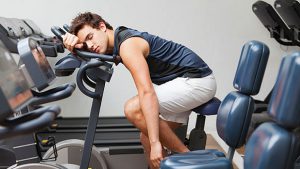
Considering A Sleep Tracker
A final technology option, and this falls way down on the priority list, is a sleep tracker.
Now many of you have a very good sense of how much you sleep and how often, and for you sleep is likely not a problem. But there’s a large percentage of Type A individuals, many of whom sign up to become triathletes, who are so tough mentally that they can push aside their body’s need for rest for extended periods of time.
If you’re a busy professional who is usually out the door by seven and back home by six on a daily basis, then adding training can really be challenging — it might mean getting up at 4:30am. It might mean staying up until 11:30pm. By putting in the extra training time outside of your normal day the only option we have is to reduce the amount of sleep that you are getting.
The vast majority of issues that beginner triathletes face are fatigue related. They are stressed out. They are restless. They are overtired. By losing roughly 20% of their weekly sleep time, beginner triathletes are more susceptible to getting sick or to suffer from other problems.
While you may not need a sleep tracker, it is certainly worthwhile paying attention to your sleep hours just to make sure that you’re getting enough. Ideally you have a sense of what your baseline sleep is without training, and then you can compare what you’re doing now in training to the baseline to make sure that you’re not too far off.
A basic guideline is to make sure that you’re getting seven hours of sleep a night. Across a week that’s 49 hours of sleep.
While you might not be able to get seven every single night, if you can juggle things such that you’re getting 49 hours across the entire week, that’s better than nothing. At a minimum, you’ll want to get close to 40 hours a week of sleep in a week, you should be okay.

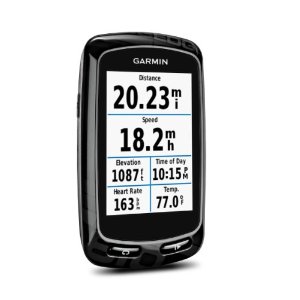
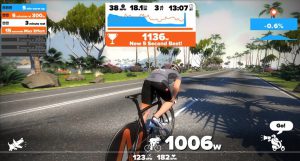

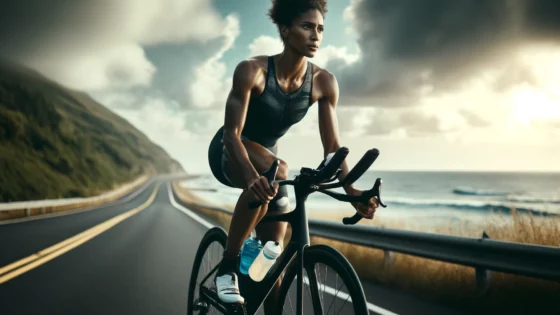

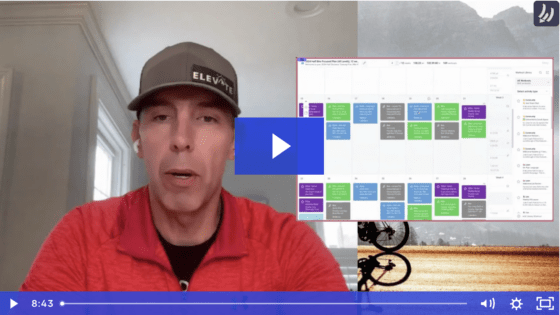
Leave a Reply